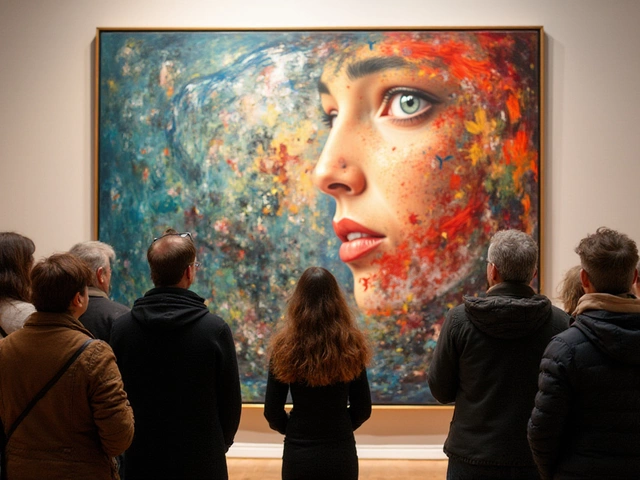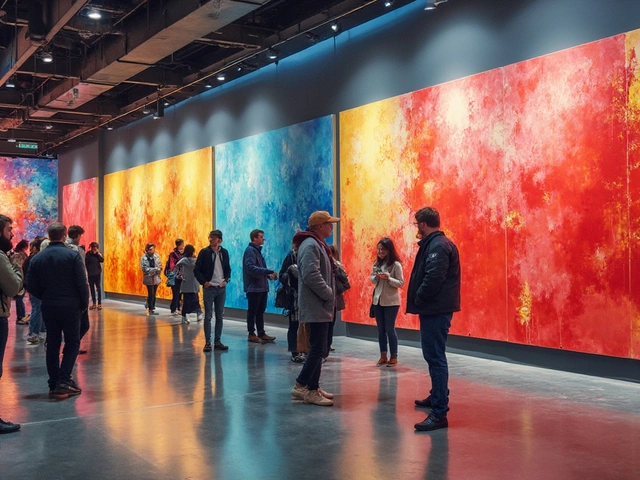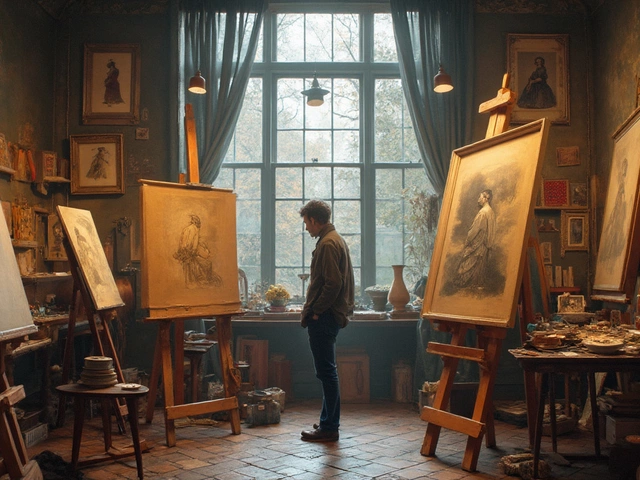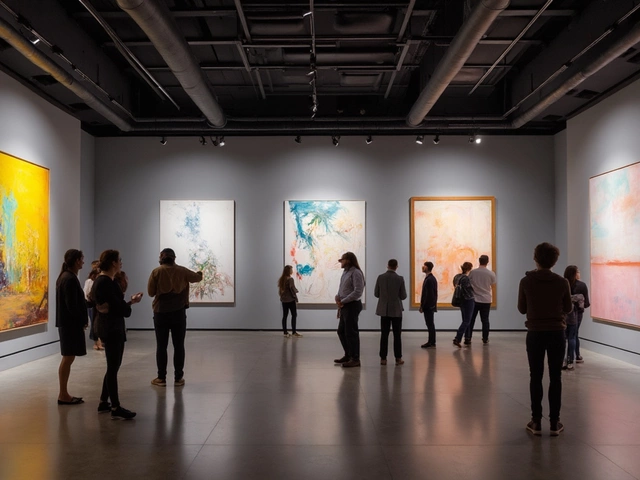Landscape Composition: How to Build Powerful Nature Paintings That Hold the Eye
When you look at a great landscape painting, it’s not just the trees or mountains that draw you in—it’s how they’re arranged. landscape composition, the deliberate arrangement of visual elements in a nature scene to guide the viewer’s eye and create balance. It’s what turns a snapshot of a hillside into a story you can’t look away from. This isn’t about following rigid rules—it’s about understanding how people see. Where do your eyes land first? What leads them deeper into the scene? What makes one part feel distant and another feel close? These are the questions every painter asks, whether they’re working in oils, watercolor, or digital brushes.
depth, the illusion of three-dimensional space on a flat surface is the backbone of strong landscape composition. You don’t need fancy tools to create it—just value contrast, overlapping shapes, and atmospheric perspective. A dark tree in the foreground, a soft blue hill in the middle ground, and a hazy horizon? That’s depth, built with simple choices. Then there’s color harmony, how colors relate to each other to create mood and unity. Warm colors like burnt sienna and ochre pull forward; cool grays and blues push back. Use that. It’s not decoration—it’s structure.
And don’t forget composition, the overall arrangement of lines, shapes, and masses. The rule of thirds? Useful, but not sacred. A winding path, a diagonal ridge, or a cluster of trees forming a triangle—these are the real tools. They control rhythm. They create tension or calm. They make your painting feel intentional, not random. Look at the best landscape painters—whether it’s Turner, Constable, or a modern plein air artist—and you’ll see the same principles at work, even if their styles are wildly different.
You’ll find posts here that break down exactly how to build these elements step by step: how to choose what to include and what to leave out, how to avoid flat, boring layouts, and how to use light to shape your scene. Some talk about painting order—background first or foreground first? Others show you how to spot the hidden structure in a simple field or forest. There’s even a post on the two main types of landscape paintings: idealized versus observational. You’ll see what separates a postcard from a painting that stays with you.
This isn’t about becoming a master overnight. It’s about learning to see like a painter. To notice how shadows fall across a slope, how a single tree can anchor an entire scene, or how a break in the clouds can turn an ordinary sky into drama. The posts below give you the practical breakdowns—not theory, not fluff—just what works when you’re standing in front of your canvas, brush in hand, wondering where to start.
How to Make Landscape Paintings Look Good: Simple Techniques for Realistic and Emotional Art
Learn how to make landscape paintings feel alive with simple techniques for composition, color, light, and texture. No fancy tools needed-just observation and honest expression.
Continue Reading




